Ford Bronco Sport Vs Subaru Outback Wilderness Comparison

Both of these ruggedized crossovers have a reputation to uphold.
The Ford Bronco Sport is the fresher face of the pair, showing up for the 2021 model year. It makes it intentions clear the moment you clock those six white letters on the grille. Son of Bronco means more off-road prowess than other sub-compact SUVs, but with an added layer of refinement that the full-size model does without.
Get a Quote on a New Subaru Outback or Ford Bronco SportIn the other corner is the Subaru Outback, the de facto flagship for the Japanese brand. When you hear the brand name, chances are you see an Outback in your mind—that, or a bright blue rally car. The Outback predicted the market’s shift towards crossovers, starting out as a trim level for the Legacy (and Impreza). Now, it’s the only way to get a Legacy wagon, and it doesn’t even use that name anymore. The Outback still sets the tone for go-anywhere family wagons, and the new-for-2022 Wilderness adds to its off-road appeal. More ride height, chunkier tires, reinforced roof rails—a lot of what you see here is stuff owners were already doing, but now they can get it all straight from the source.
So you want a family hauler with more off-road capability than the average crossover? You’ve come to the right spot.
Interior and Cargo Space
Bronco Sport: The Bronco Sport’s interior is workmanlike. The closest thing the baby Bronco has to flair is the two-tone leather-and-suede seating, with the milk chocolate color extending to the door cards and dashboard. Four tall vents punctuate a simple dashboard, complete with an 8.0-inch touchscreen right in the middle of it all. The climate controls are big and easy to use, even with gloves. A useful storage cubby below the infotainment is most welcome, as are the large door pockets.
The seats themselves are deceptively good; flat, yet soft enough to get comfortable, while still maintaining support. They’re mounted high, which gives the driver a commanding view out over the square hood.
Space is very generous up front, with lots of legroom and ample headroom. The back seat is less good, where legroom measures 36.9 inches (937 mm): knees will brush up against the front seatbacks for lots of full-grown adults. Headroom won’t be an issue, due to the stepped, Safari-style roof—seriously, it’s actually slightly more back versus front: 41.7 inches (1,059 mm) versus 41.5 inches (1,054 mm).
29.4 cubic-feet (833 liters) of hatch space is solid for a vehicle this size. Dropping the rear seats more than doubles that figure to 60.6 cubes (1,716 L). Plus, you can always access it by lifting just the rear glass instead of the whole hatch.
Outback Wilderness: We hope you like black. Just as it is in the Bronco Sport, the Outback’s interior is awash in black plastic. There’s a more curvaceous dashboard design, which isn’t just for form; its function is to house the enormous portrait-orientation touchscreen, too. We appreciate the swoopier design just as much as we dislike the abundant piano black around the shifter. Material quality is good, but there isn’t as much bric-à-brac storage as there is in the Bronco Sport.
The Wilderness seats come trimmed in Subaru’s StarTex texture. Not only does its water-resistant nature make it easier to clean, it provides an interesting feel that I’m personally a fan of. You sit low in the front, a reminder that the Outback was once just a trim on the family wagon. I can’t get quite as comfortable in its seats as I can in the Blue Oval thrones though, with a hard lower cushion.
Naturally, the longer Subaru boasts more legroom: 42.8 inches (1,087 mm) up front, and 39.5 inches (1,003 mm) in the back. It’s lower too, so headroom is 40.1 and 39.1 inches (1,019 and 993 mm), respectively.
Trunk space isn’t quite the dominant win you’d expect, at least with the seats up. You’re looking at 32.5 cubic feet (920 L) in that configuration, but the Subaru pulls ahead in two-seat form, capable of swallowing up to 75.7 cubes (2,140 L).
Bottom Line: This is a real back-and-forth to start us off. The Bronco’s interior is plainer, but that’s part of its appeal. It’s also more comfortable, and easier to see out of. The Subaru has more space for people and their things overall, but hat enthusiasts might feel it’s too low. Interior quality also varies more.
The Bronco Sport simply feels better equipped for adventures, with more storage solutions and a rough-and-tumble vibe. It nets the first category win.
SEE ALSO: Subaru Outback vs Subaru Forester ComparisonTech and Features
Bronco Sport: All Bronco Sports make use of Ford’s SYNC3 system. Like the rest of the interior, it’s straightforward. It’s not the quickest system out there, but it gets the job done, with standard (wired) Apple CarPlay and Android Auto. The screen between the analog dials is more impressive, as switching between the various drive modes brings a fun animation. There’s useful info too, like the amount of pitch and roll while off-roading. Voice-activated navigation is handy, though I find Siri more accurate.
There are four USB outlets dotting the interior plus a wireless charging pad, so everyone can keep their mobiles topped up. The Bang & Olufsen sound system is good, especially for those who prefer bass. The Badlands also adds a front-facing camera, which should prove useful on the trails.
Outback Wilderness: Subaru’s big 11.6-inch screen gives the Wilderness the early advantage. It’s sharp, easy to navigate, and mercifully still has a few physical buttons dotting its sides for common controls. It’s not as seamless on the ol’ CarPlay sync front—wired here, too—with a bit of lag and the occasional disconnect. The main menu has a steeper learning curve than the Ford’s system as well. But by the end of the week, all was good.
The minuscule screen between the dials feels very last-gen, but it does offer up important information at a glance. A personal favorite: the running tally of how much gas the start-stop system has saved.
Just as the BroSpo does, the Wilderness includes a quartet of charge ports plus a wireless pad. It’s got its own front-facing camera as well. The six-speaker sound system can’t match the Bronco’s B&O setup, though.
SEE ALSO: Toyota RAV4 vs Nissan Rogue ComparisonBottom Line: It might have a weak sound system, but the Outback’s big screen secures this category for the Scooby. It’s easier to use, and the size means buttons are easier to read without drawing attention away from the road.
Powertrain, Driving Feel, and Fuel Economy
Bronco Sport: Most Bronco Sports come with Ford’s gruff little 1.5-liter EcoBoost three-cylinder, but the Badlands adds an extra cylinder. The 2.0-liter produces 250 horsepower and 277 pound-feet of torque, gifting this little box with a surprising amount of go. Sending that power to all four wheels is an eight-speed automatic.
With the tall seating position and boxy exterior, the Bronco Sport is a blast to point and shoot around the dirt trails and backroads northwest of Toronto. Throttle response is good, and the auto ‘box quickly finds the right gear for the task at hand. It even sounds pretty decent under full throttle, too.
Of the two, the BroSpo is the noisier on the road—though not by as much as you’d expect. The fuss is focused around the side mirrors, mostly. Thick sidewalls and soft suspension tuning combine for a comfortable ride. Crucially, the Bronco Sport doesn’t get wayward over multiple yumps, keeping its weight in check. The steering is light, yet turn-in is sharp. With the short overhangs and low on-tarmac grip, the Bronco is pretty fun to chuck around on the road.
Head off the pavement, flip the G.OA.T. mode selector to something suitable, and it’s game to clamber up most trails. The rear torque vectoring and locking diff ensure the baby Bronco finds grip in places that should satisfy all but the most hardened off-roader. It’s easy to place on narrow trails, too.
Official fuel economy figures are 21 mpg city, 26 mpg city, and 23 mpg combined. Canadian figures are 11.1/8.9/10.1 L/100 km, respectively. During the week, our Badlands tester hovered around 22.4 mpg (10.5 L/100 km).
Outback Wilderness: More similarities: the Wilderness sticks to the high-power engine in the Outback’s lineup. A turbocharged 2.4-liter boxer-four spits out more power than the Bronco Sport (260 hp) but the same amount of peak torque (277 lb-ft). An upgraded version of Subaru’s continuously-variable transmission sends the power to the brand’s iconic symmetrical all-wheel drive system.
It’s an agreeable enough pairing, with faux “kick downs” happening quickly when the pedal hits the stop. Do this and you’ll find that rubberband buzz typical of the breed, but around town all that torque helps keep the revs low. The extra size and weight of the Wilderness negates any power advantage the boxer-four has, though.
SEE ALSO: 2022 Subaru Outback Wilderness Review: First DriveThe raised ride height and A/T tires add an extra layer of smoothness to the Outback’s gait—a car that wasn’t exactly short on cruising comfort to begin with. On the road, it does feel more anodyne than the Bronco Sport, the Wilderness modifications dulling the feedback from the wheel (and seat of the pants). It’s as if a thin layer of insulation exists between the driver and the front wheels. The Subaru’s size feeds into this; the car feels more comfortable on gentle sweepers, where the long wheelbase keeps it feeling locked on target.
The Wilderness keeps up with the Bronco Sport every step of the way on our (admittedly light) off-roading sections, and it has one key advantage: underbody skid plates.
Officially, the Subaru is actually slightly more fuel efficient than the Ford; 22/26/24 mpg (10.7/9.0/9.8 L/100 km), respectively. That wasn’t the case during the week however, where it sat closer to 21.4 mpg (11.0 L/100 km).
Bottom Line: The Bronco Sport shows that being more truck-like isn’t always a bad thing. Despite its more upright stature, the Ford is simply more fun, its square stance making it more agile on and off the road. It does this without sacrificing much NVH over the Subaru, either. We like the grab-it-by-the-scruff attitude, and thus the Ford’s bluff nose edges ahead once more.
Safety
Bronco Sport: Every Bronco Sport comes with automated emergency braking (including post-accident braking), lane-keep assist, auto high beams, and blind-spot monitoring. This tester also includes the optional adaptive full-range cruise control, which comes bundled with lane centering, speed sign recognition, and rear parking sensors.
Over at the Insurance Institute for Highway Safety (IIHS), the Bronco Sport scores a full Top Safety Pick+ rating, regardless of trim. Meanwhile, the National Highway Traffic Safety Administration (NHTSA) awarded the Bronco Sport a five-star overall rating for its crash test results.
Outback Wilderness: Subaru includes its full suite of driver assists on the Wilderness as standard, matching the Ford’s extended lineup. That means full-range adaptive cruise control, auto headlights, lane keep assist, lane departure alert, blind-spot monitoring, rear cross-traffic alert, and automated emergency braking. It also includes automated reverse braking to avoid parking-related scuffs. Of the two, the Subaru is the more likely to beep at its driver for perceived risks.
Like the Bronco Sport, the Outback scores top marks from both the IIHS (Top Safety Pick +) and NHTSA (5-Stars).
Bottom Line: As equipped, these two are pretty evenly matched. The biggest difference is that the Ford’s added assists cost extra—not much, but still more—while the Subaru bakes them all in as standard.
SEE ALSO: Subaru Outback vs Subaru Forester ComparisonStyling
Bronco Sport: Familiarity has not dulled the impact of the Bronco Sport’s stylish-cube shape: I’d driven a three-cylinder model the week before, and another Badlands earlier in the year. Ford drizzled on the right amount of big Bronco design cues for the baby of the family, but was careful to give the crossover its own look.
Outback Wilderness: The Outback looks enormous beside the compact Ford. It’s also making a song and dance of its enhanced capability, with the plastic cladding growing to cover more of the bodywork. It does butch up the whole package, though, especially with the chunkier Yokohama rubber.
Bottom Line: The Bronco is the seasoned outdoorsman, all wide stance but relatively unassuming looks. The Outback is the person who hit every aisle of Bass Pro Shops before the cottage trip. You can’t knock the enthusiasm.
SEE ALSO: Honda Civic vs Toyota Corolla: Which Compact Sedan is Right For You?Pricing and Value
Bronco Sport: You can get into a Bronco Sport for as little as $28,710 ($34,199 CAD), including destination. That’s quite the different animal to the Badlands though, with a light-duty AWD system, smaller engine, and less tech. We enjoyed the 1.5-liter BroSpo, but it’s more mall- than rock-crawling.
SEE ALSO: 2021 Ford Bronco Sport 1.5T Review: Friendly Mall CrawlerTo get into this particular Bronco Sport costs $39,495 ($47,449 CAD), thanks to the Badlands package, ($2,695 / $3,000 CAD), the advanced safety pack ($895 / $850 CAD), cargo management system ($110 / $200 CAD), upgraded tow hitch ($445 / $600 CAD), and wider off-road tires ($495 / $600 CAD).
Outback Wilderness: Like the Bronco Sport, there’s much cheaper ways into a regular Outback, which starts at $28,070 ($33,070 CAD). The Wilderness rings up at a higher $38,120, and then ads a further couple grand for the moonroof/navigation combo and underbody skid plates, totalling $40,565. In Canada, all that’s standard, so the as-tested price is $43,870 CAD.
Bottom Line: Which of these two is more affordable depends on which part of the border you reside. In America, the Wilderness costs a grand more, but in Canada it’s the Bronco Sport that’s pricier, by over three times that amount.
SEE ALSO: Hyundai Elantra N Line vs Volkswagen Jetta GLI Comparison: Healthy CompetitionVerdict: Ford Bronco Sport vs Subaru Outback Wilderness
Considering their different sizes, both the Ford Bronco Sport and Subaru Outback Wilderness feel remarkably well-matched in attitude. Both take their respective well-balanced base crossovers and put their thumbs on the off-road scale juuuuust a bit. You’ll be able to conquer small surprise streams on the way to the cottage and clamber up steep hills, but you won’t have to deal with the tractor-like, wander-on-the-highway feel a more dedicated off-roader brings to the table.
The Outback Wilderness feels like the natural evolution of Subaru’s high-riding wagon. It should be a hit for Subaru loyalists, but even those new to the brand will find its blend of abilities appealing. And, if they’re in Canada, it’s a good deal, too.
The Bronco Sport is just more fun, though. The Bronco is an ally on and off the road, with solid dynamics and a supremely useful interior. There’s an outsized character bursting from the boxy seams, encouraging drivers to take on the next big adventure. Who are we to say no?
Become an AutoGuide insider. Get the latest from the automotive world first by subscribing to our newsletter here.

Kyle began his automotive obsession before he even started school, courtesy of a remote control Porsche and various LEGO sets. He later studied advertising and graphic design at Humber College, which led him to writing about cars (both real and digital). He is now a proud member of the Automobile Journalists Association of Canada (AJAC), where he was the Journalist of the Year runner-up for 2021.
More by Kyle Patrick



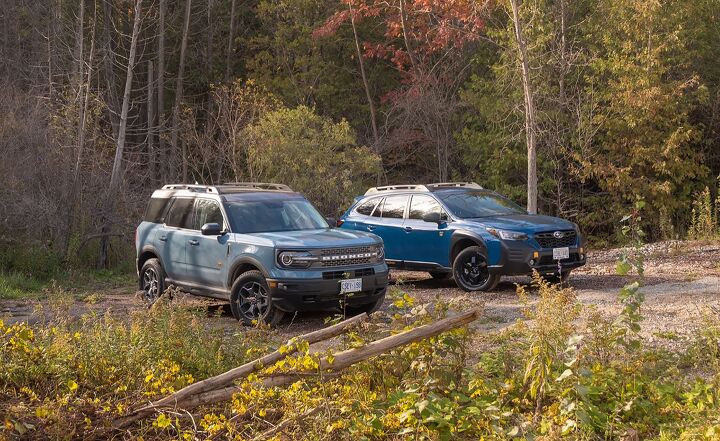




























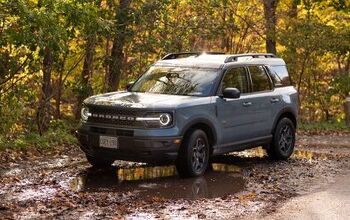
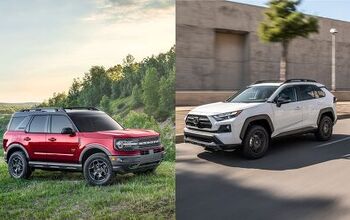

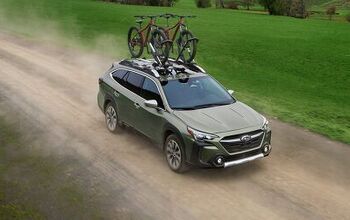
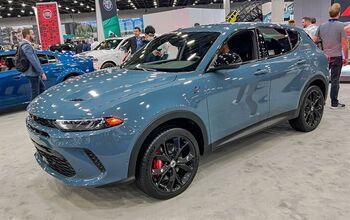


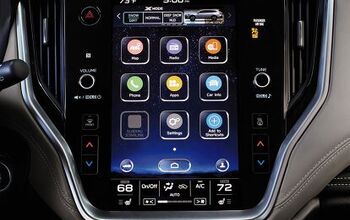
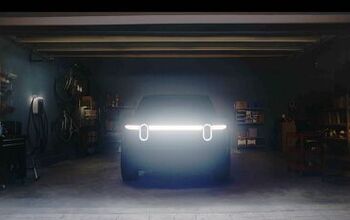
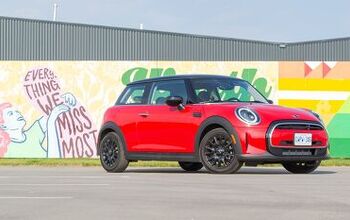

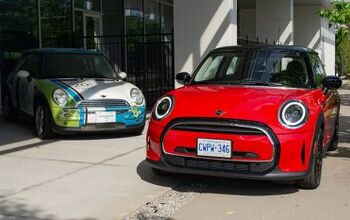
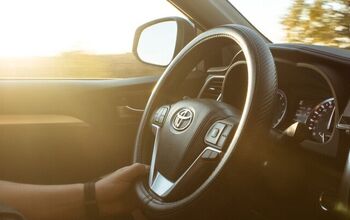
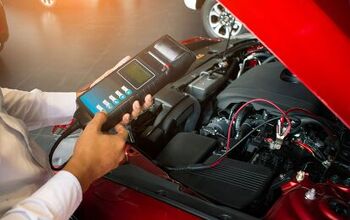

Comments
Join the conversation
An excellent article. We just traded our Subaru Outback and Toyota 4Runner vehicles for 2 Broncos and love them. Such a fun ride.